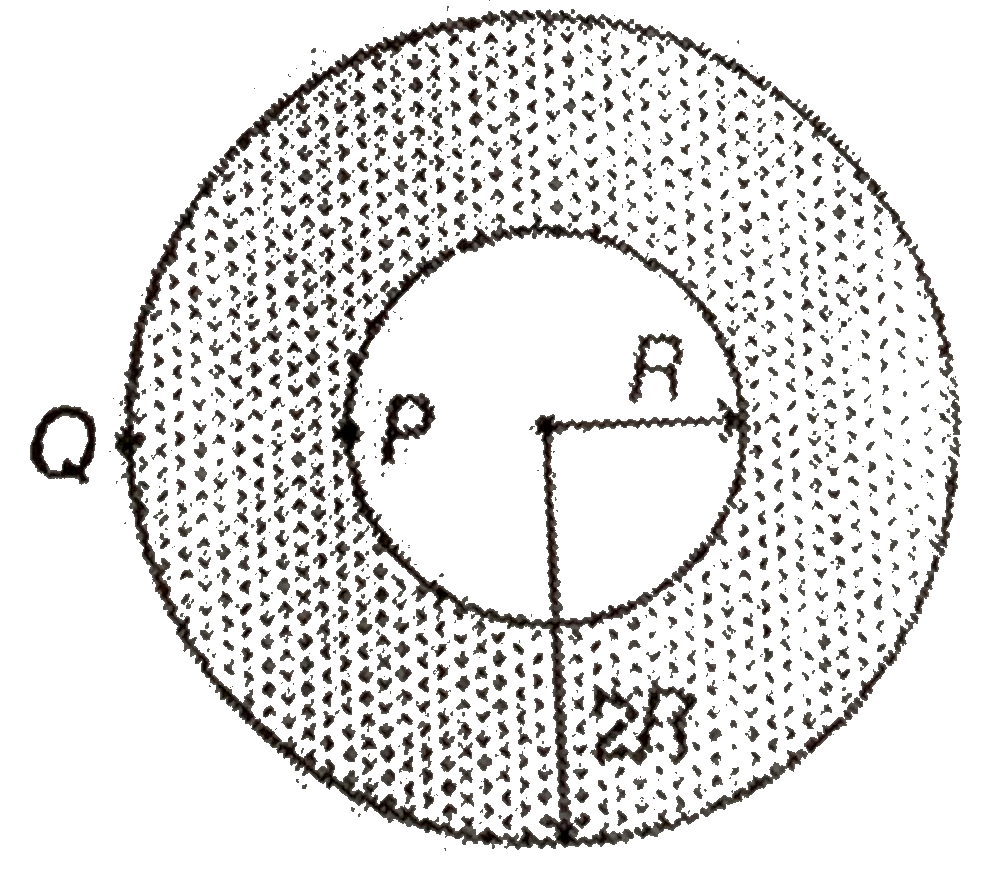Consider a solid sphere oF radius R and mass density ρ(r)=ρ0(1−r2R2) 0<r≤R. The minimum density oF a liquid in which it will Float is:
ρ03
2ρ05
2ρ03
ρ05
The correct Answer is:2
To solve the problem, we need to find the minimum density of a liquid in which a solid sphere with a given density profile will float. The density of the sphere is given by:
ρ(r)=ρ0(1−r2R2)for 0<r≤R
Step 1: Calculate the Mass of the Sphere
To find the mass of the sphere, we need to integrate the density over the volume of the sphere. The volume element in spherical coordinates is given by dV=4πr2dr. Thus, the mass M of the sphere can be calculated as follows:
M=∫R0ρ(r)dV=∫R0ρ(r)4πr2dr
Substituting the expression for ρ(r):
M=∫R0ρ0(1−r2R2)4πr2dr
Step 2: Simplify the Integral
We can simplify the integral:
M=4πρ0∫R0(r2−r4R2)dr
This can be split into two separate integrals:
M=4πρ0(∫R0r2dr−1R2∫R0r4dr)
Step 3: Evaluate the Integrals
Now we evaluate the integrals:
1. ∫R0r2dr=R33
2. ∫R0r4dr=R55
Substituting these results back into the equation for M:
M=4πρ0(R33−1R2⋅R55)
Step 4: Simplify the Expression for Mass
Now, we can simplify the expression for mass M:
M=4πρ0(R33−R35)
Finding a common denominator (15):
M=4πρ0(5R315−3R315)=4πρ0(2R315)
Thus, the mass of the sphere is:
M=8πρ0R315
Step 5: Calculate the Volume of the Sphere
The volume V of the sphere is given by:
V=43πR3
Step 6: Apply Archimedes' Principle
For the sphere to float, the buoyant force must equal the weight of the sphere. The buoyant force Fb is given by:
Fb=ρlgV
where ρl is the density of the liquid and g is the acceleration due to gravity. The weight of the sphere W is given by:
W=Mg=8πρ0R315g
Setting the buoyant force equal to the weight:
ρlg⋅43πR3=8πρ0R315g
Step 7: Solve for the Density of the Liquid
Canceling g and πR3 from both sides:
ρl⋅43=8ρ015
Now, solving for ρl:
ρl=8ρ015⋅34=2ρ05
Final Answer
Thus, the minimum density of the liquid in which the sphere will float is:
2ρ05
2. ∫R0r4dr=R55
Topper's Solved these Questions
Similar Questions
A Solid sphere of density ρ=ρ0(1−r2R2),0<r≤R just floats in a liquid then density of liquid is– (r is distance from centre of sphere)
View SolutionA solid ball of radius R has a charge density ρ given by ρ=ρ0(1−rR)for0≤r≤R The electric field outside the ball is :
View SolutionMass density of sphere having radius R varies as ρ=ρ0(1−r2R2) . Find maxium magnitude of gravitational field

View SolutionThe mass density of a planet of radius R varie with the distance r form its centre as ρ(r)=p0(1−r2R2). Then the graviational field is maximum at :
View SolutionA solid sphere of radius R and density ρ is attached to one end of a mass-less spring of force constant k. The other end of the spring is connected to another solid sphere of radius R and density 3ρ. The complete arrangement is placed in a liquid of density 2ρ and is allowed to reach equilibrium. The correct statements(s) is (are)
View SolutionA solid sphere of radius R and density ρ is attached to one end of a mass-less spring of force constant k. The other end of the spring is connected to another solid sphere of radius R and density 3ρ. The complete arrangement is placed in a liquid of density 2ρ and is allowed to reach equilibrium. The correct statements(s) is (are)
View SolutionThe density inside a solid sphere of radius a is given by ρ=ρ0r, where ρ0 is the density ast the surface and r denotes the distance from the centre. Find the graittional field due to this sphere at a distance 2a from its centre.
View SolutionThe density inside a solid sphere of radius a is given by ρ=ρ0r, where ρ0 is the density at the surface and r denotes the distance from the centre. Find the gravitational field due to this sphere at a distance 2a from its centre.
View SolutionA solid sphere of radius R and mass density ρ is surrounded by another outer sphere of density 2ρ. Let EP is gravitational field at P and EQ is at Q. If the ratio of EQ/EP=3k/4. Find the value of k.

View SolutionA solid sphere of radius R1 and volume charge density ρ=ρ0r is enclosed by a hollow sphere of radius R2 with negative surface charge density σ, such that the total charge in the system is zero . ρ0 is positive constant and r is the distance from the centre of the sphere . The ratio R2/R1 is
View Solution